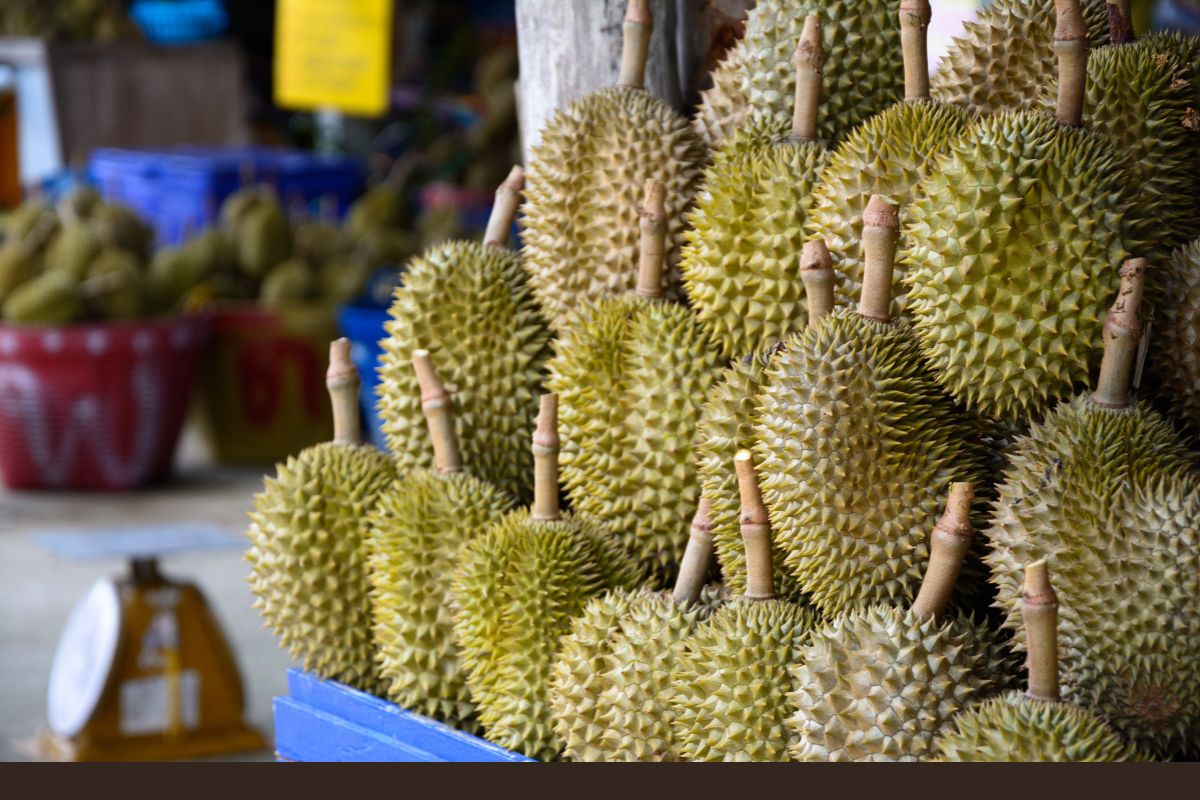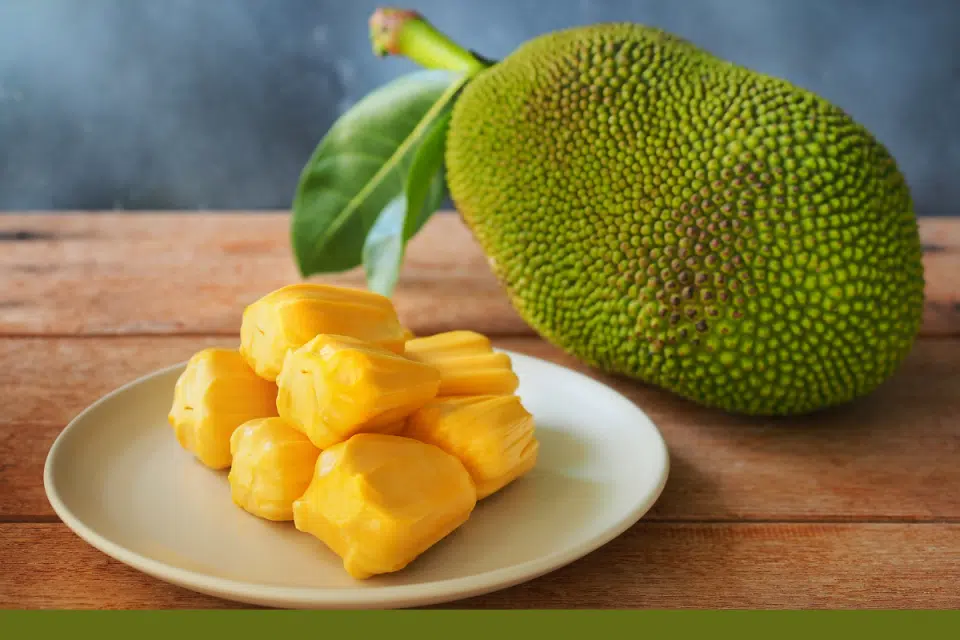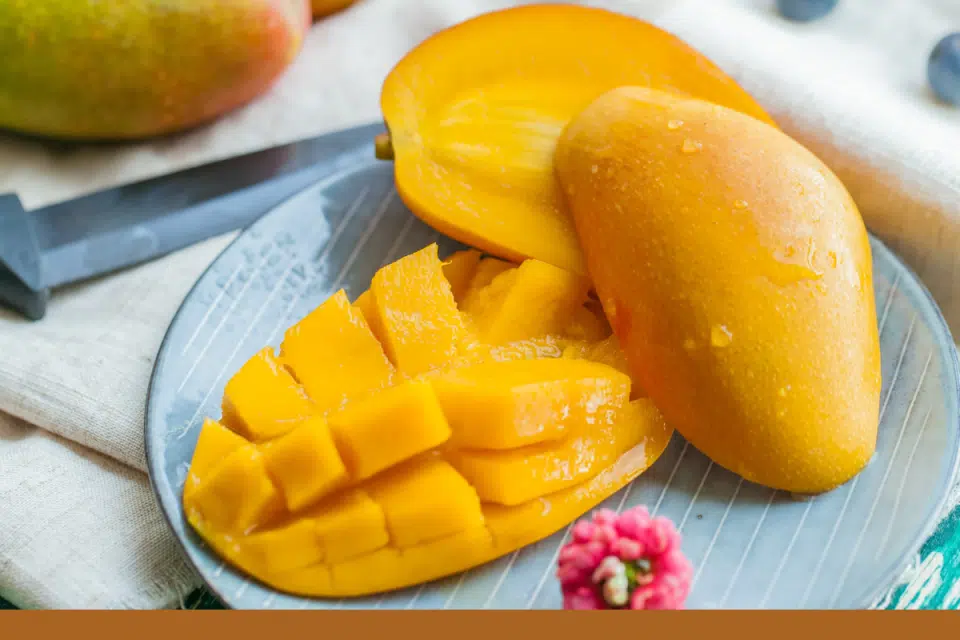15 Popular Malaysian Fruits

Located in the middle of Southeast Asia, Malaysia consists of the Malay peninsula (south of Thailand, north of Singapore) and two large states on the island of Borneo, which Malaysia shares with Brunei and Indonesia. It’s position near the equator endows Malaysia with a tropical climate, with ample sunlight, rainfall, heat, and humidity all year round.
As such, a wide variety of fruit-bearing trees and plants – mostly indigenous, while some are successful transplants from other tropical regions – thrive throughout the country, creating a paradise for fruit enthusiasts.
Some of the Malaysian fruits listed here are seasonal, while others can be enjoyed throughout the year. You can find them practically everywhere when travelling through Malaysia: in supermarkets, grocery stores, night markets, roadside stalls, and in shopping malls.
Nearly all of these fruits can be eaten raw, but some are also consumed pickled or as part of a refreshing drink or dessert. Let’s round up the most popular.
1. Durian

Known as the King of Fruits across Southeast Asia, durian is mostly grown in Thailand, Malaysia, Indonesia and the Philippines, but they have also become incredibly popular in China. These spiky fruits can grow up to the size of an American football. It takes some effort to cut open their thick husk to gain access to the creamy, custard-like pulp.
Durians are notorious for their strong, pungent aroma, which is mainly why most people either love them or hate them – we included durian in our list of the world’s most weird foods. This is why they are often exiled from public transportation, airports, and the premises of many hotels.
The Musang King and D24 varieties fetch the highest prices. Durians are easiest to find during the main season, June to August, but there is also a smaller season between November and January. For the full experience, schedule a visit at a durian orchard to see how these majestic fruits are grown and harvested. Premium durian varieties are also used to make ice cream, cakes, sweets, and pastries.
2. Rambutan

A relative of the lychee, the rambutan gets its name from its hair-like spines (rambut means hair in Malay). You eat them as you would eat a hard-boiled egg. Tear away the hairy shell, eat the whitish oval fruit within, and discard the seeds – although rambutan seeds can be roasted and then consumed as a snack. Rambutan flesh is sweet and slightly acidic, with a mild but pleasant fragrance.
There are two main types of rambutan: red and yellow. The red varieties are larger and easier to find across Malaysia.
3. Jackfruit (Nangka)

The jackfruit is closely related to the breadfruit, figs, and mulberries. It is the world’s largest tree-borne fruit.
A mature jackfruit can weigh up to 55 kg (121 pounds). This is why jackfruit is rarely sold whole – most supermarkets and vendors will sell pre-cut portions that can be consumed immediately. Jackfruit flesh is bright yellow, with a stringy texture.
When ripe, it is sweet, with a subtle smell and flavor, which has been described as a cross between pineapple and banana. Jackfruit seeds are large and can be consumed after being boiled, baked, or roasted. You can enjoy jackfruit all year round.
4. Mangosteen

Mangosteen season occurs at the same time during durian season – June to August, with a smaller season between November and January. You can peel away the strikingly colored outer rind, which ranges from deep red to dark purple in color, to access the white flesh within. The inner flesh is segmented like an orange, and is especially sweet, juicy, and tangy.
Unlike most other fruits on this list, mangosteen is cultivated on a relatively modest scale. Due to its seasonal nature, limited supply, and its tendency to spoil quickly, high-quality fresh mangosteen is a rare treat – don’t miss the chance to savor it if it comes your way.
5. Dragon Fruit

Also known as pitaya, pitahaya, and strawberry pear, dragon fruit gets its name from its bright reddish-pink skin and green scales. Though it is native to southern Mexico and Central America, it is cultivated and consumed across East, South, and Southeast Asia.
There are two varieties that are widely consumed across Malaysia, one with white pulp and the other with purplish-red pulp. The purplish-red variety is often used to add flavor and striking color to juices and desserts. Dragon fruits actually taste less exotic than they look – somewhere between a kiwi and a pear.
6. Pomelo

The pomelo is the world’s largest citrus fruit and the ancestor to the more widely-known grapefruit. Malaysian pomelos range from 15-25 centimetres in diameter. Their whitish and spongy flesh are protected by a thick, smooth and light green rind.
Pomelo flesh is pinkish, fibrous and soft, with a tart, vaguely sweet, and occasionally bitter flavor. As with other citrus fruits, pomelos are a great source of vitamin C.
When buying a whole pomelo from a Malaysian fruit vendor, tell him or her when you plan to consume it. They will help you pick a fruit that will ripen just in time for consumption. Some of the largest, juiciest and tastiest pomelos in Malaysia can be found in the town of Ipoh, in the northern state of Perak.
This is because the pomelo farms of Tambun Valley are said to benefit from the mineral-rich limestone hills in the area. Pomelos are in season between August to October and from January to March.
7. Papaya

Though papayas are actually native to Mexico and Central America, they are now consumed all year round across Malaysia. Papayas are very easy to grow in Malaysia; many people grow them in their own backyards.
Unripe papaya, which is crunchy and mildly sweet, is often used in savory dishes such as salads and curries. Ripe papaya, usually with orange flesh, is soft, is sweet and juicy and best eaten fresh on a hot, sunny day.
8. Langsat

At first glance, langsat look like a cluster of grapes but with an outer skin that makes them look like small round potatoes. Once you peel away the brown flesh, you’ll see their whitish, translucent flesh, which does not fully conceal the seed in the middle of the fruit.
Langsat flesh is tender; it has a unique tangy, sweet and sour flavor. They are best eaten fresh during their main season, between June and August.
9. Longan

A cluster of longan look very similar to a cluster of langsat, but longan are sweeter and taste more like lychee. Longan is often referred to as “cat’s eye” (mata kucing) because it has whitish, translucent flesh that surround a pitch-black seed.
While langsat flesh are segmented into cloves, a bit like garlic, longan flesh forms a single sphere around a central seed.
Longan is relatively ubiquitous. You can eat them fresh or find them in canned in syrup in most groceries stores and supermarkets. Their pleasant and sweet taste make them a common part of drinks, desserts, and dessert soups, such as tong sui and cheng tng.
10. Jambu Air (Watery Rose Apple)

Jambu air (air means water in Malay) look like smaller, pinker, and compact bell peppers, but they taste more like a cross between a snow pear, an apple, and a watermelon. You can eat them whole – bite around the core, as you would with an apple – or cut them into slices.
Either way, they are eaten with their waxy outer skin. The inner whitish flesh is light, juicy, and spongy. It has a pleasant, mildly sweet flavor. You can eat them raw, or season them with a small amount of sugar and salt.
11. Guava (Jambu Batu)

Guavas may not be native to Southeast Asia, but they can be easily found across Malaysia. This pear-size fruit is typically eaten whole after being cut into smaller pieces. The white guava, which has whitish flesh rather than pinkish or reddish flesh, is most common. Guava flesh can range from hard and crunchy to soft and juicy, depending on how ripe the fruit is.
Small and hard seeds are embedded into the flesh and are usually swallowed whole. Guava slices are a common street food in Malaysia; they can be eaten raw or with a dash of asam powder, which has a strong, sour taste. Guavas are also consumed as part of rojak: a savory fruit salad that is fairly ubiquitous in Malaysia.
12. Mango

When it comes to mangoes, Malaysia tends to be overshadowed by neighbouring Thailand, the Philippines, and Indonesia. The common Malaysian mango is relatively modest in size and flavor profile. It is usually consumed ripe, when the flesh turns dark yellow and juicy, or semi-ripe, when the flesh remains crunchy and greenish-white.
Either way, imported varieties tend to fetch higher prices and greater attention in the country.
The Harumanis Mango is the exception. The name says it all: harum means fragrant in Malay, while manis means sweet. It has been dubbed the Musang King of mangoes because of its silky-smooth texture, rarity, and high prices. It is only grown in Perlis, the northernmost and tiniest state in Malaysia, but it actually originates from East Java.
They are only cultivated on a small scale and harvested once a year, between September and November. Malaysia’s most expensive mango cultivar can cost up to RM40 (nearly 10 US dollars) per kg.
13. Starfruit (Belimbing)

The aptly-named starfruit is in season from April to June and between October to December. The yellowish varieties are sweeter, while the greener ones have a sourer flavor profile.
Starfruits are easy to consume – just cut them horizontally into star-shaped slices and eat them whole. The skin is edible; you can swallow the small seeds or discard them. Starfruits have a crisp yet juicy texture.
14. Tarap (a.k.a. Marang)

Tarap is native to Borneo and the Philippines – Mindanao Island and the province of Palawan, to be more specific. It can be found easily in Sabah between November and December, but it is difficult to find in Peninsula Malaysia because its short shelf life discourages long distance transportation.
Though tarap is more closely related to the jackfruit and breadfruit, it is often compared to the durian because of its strong aroma. Its pungent scent actually comes from the skin; its flesh is more similar to the jackfruit it terms of aroma and texture. Tarap flesh is soft, creamy and sweet – enjoy it quickly because it oxidises rapidly.
15. Dabai (a.k.a. Kembayau)

Native to Borneo, dabai is often described as the Sarawakian olive. It has shiny black skin and a yellow pulp with a texture reminiscent of dates, without the sweetness. As with dates, the flesh surrounds a large and hard seed, which can be discarded or cracked open to access its edible kernel. Dabai are prepared for consumption by soaking them in a bowl of hot water.
The heat softens its hard flesh into a soft, buttery texture. Dabai is particularly popular in Sarawak, where it is often eaten after being marinated in a mixture of spices, salt, and soy sauce. The annual Dabai Festival (Pesta Dabai Song) Kapit is the best place to taste this seasonal delicacy in all its myriad forms.
Though some popular and harder-to-find varieties can be expensive, Malaysian fruits generally range from cheap to affordable when purchased domestically.
The Malaysian government and agricultural sector do have ambitions to turn the nation into a major tropical fruit producer, but the bulk of Malaysia’s exports currently end up in neighboring countries such as Singapore, Thailand and Brunei – significant quantities are also shipped to China and the Middle East.
As such, many of these fruits are difficult to find outside of Southeast Asia and are relatively expensive when purchased far away from their country of origin.
With some exceptions (like durian), Malaysian fruits are low in calories and high in fiber and micronutrients. There’s no reason not to try as many of them as possible when travelling here. When in Malaysia, eat like a Malaysian. And don’t worry if some of these fruits are too foreign or unfamiliar – you can always find mainstays like apples, oranges, grapes, pineapples, bananas, and strawberries here as well.
Related: 25 Most Popular Malaysian Foods
Related: Top 20 Desserts in Malaysia

